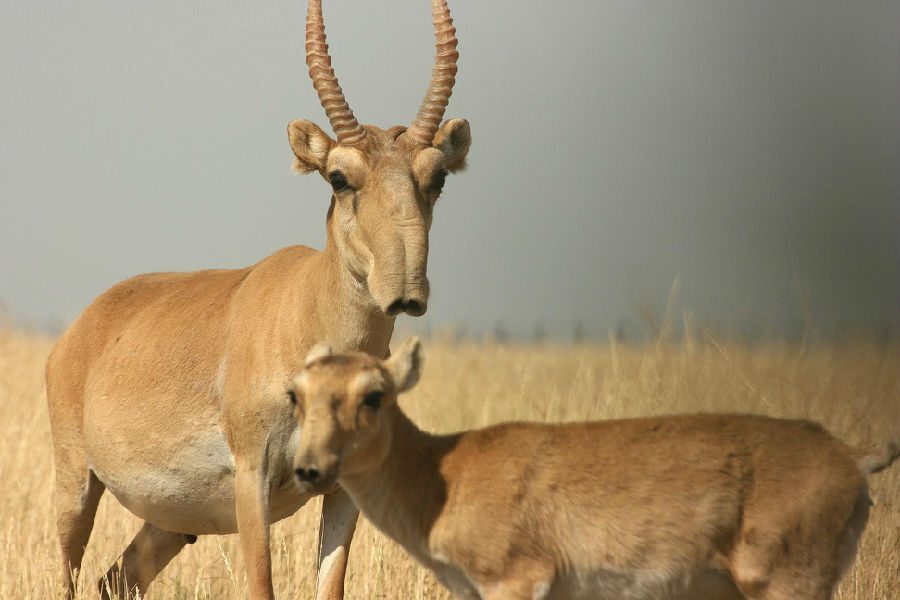The largest grassland on Earth, the vast Eurasian Steppe,
遼闊的歐亞草原區是地球上最大的草原地帶,
stretches one third of the way around our planet.
覆蓋距離達到地球周長的三分之一。
Spring rain has brought fresh grass, and with it, new life.
青草隨春雨而生,也帶來了新生命。
A relic from the Ice Age, a baby Saiga antelope, just three hours old.
一種冰川時代存活至今的生物,高鼻羚羊幼崽,出生才三小時。
His only company, his twin.
陪伴它的只有它的孿生兄弟。
Until they can stand, their mother has left them hidden in the grass.
在它們能站起來之前,母親會將它們藏在草叢中。
They should be safe, as long as they remain quiet.
這樣應該很安全,只要保持安靜。

For these calves, the clock is already ticking.
對這兩只小羊來說,時間緊迫。
Their herd will soon be moving on, seeking the freshest new grass.
羚羊群很快就要離開,去尋找最新鮮的草場。
Their lanky legs are a sure sign that they're built for a life on the move.
高鼻羚羊四肢瘦長,預示著它們一生都將奔波在路上。
Saiga always give birth to twins,
高鼻羚羊總會產下孿生幼崽
so their numbers grow rapidly just when grass is plentiful.
這樣能夠在草源充足時迅速繁衍。
Their bizarrely shaped nose can detect fresh growth from hundreds of miles away.
它們的鼻子長相奇怪,卻能夠勘測到幾百公里外的青草長勢。
The young twins will now begin the nomadic life they share with most animals on the world's open plains.
這兩只小羊即將與其他草原動物一樣,開始遼闊草原上不斷遷徙的生活。











